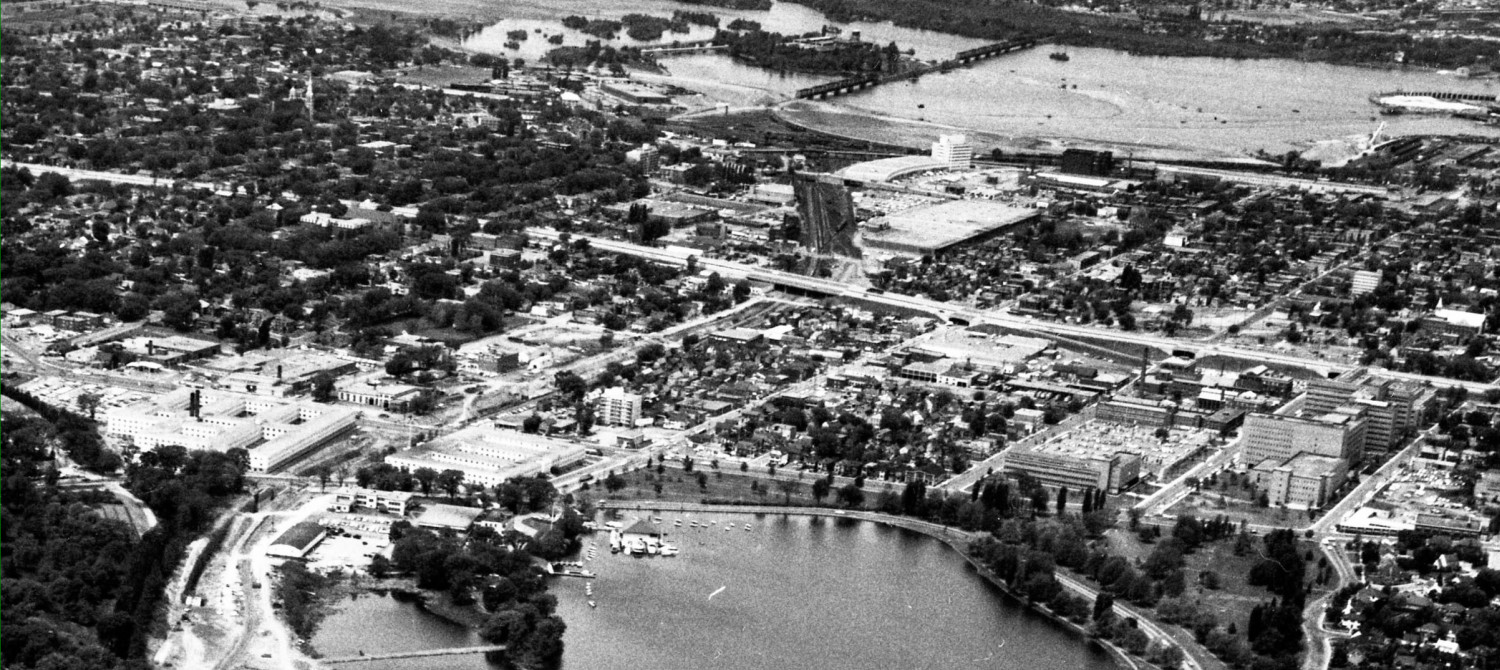Kirchzarten, Germany: this town is small. Population 10,000. It is big enough and old enough to have its own “main street” town centre that is viable and attractive. It is also close enough to Freiburg and Basel that it is in their commuter shed, and is connected by frequent regional rail services.
The town is growing, and has its “new section”. Not way out in a field, but snuggled up close to the existing town. Roads and paths continue from old areas into the new. Kids still walk to school; others cycle to the banhof or walk to shop “the main drag”.
The new section looks like houses, but on closer inspection was all apartments or stacked townhouses, built in the European style much different from that in Ottawa.
Sometimes the houses sat inelegantly on their lots:
The quality of the public realm was astonishing (to me), just look as the street paving, which encourages play and social interaction, the calming islands, and trees planted in the middle of the roads:
Intersection brickwork like in the picture above is strictly forbidden in Ottawa, as it might “confuse” the motorist, who must surely be of limited brain in Canada’s capital.
Despite the traffic calming and landscaping, the new “suburbs” looked and felt different from the old town (above). More apartment-y, and even with underground parking, the area seemed more dominated by cars …
Barrhaven this was not.









Looking at your picture, I think that whole point of the brickwork roadway might be to ‘confuse’ the motorist. I’ve seen something similar in Rotterdam, where I had to think and pay careful attention (as a pedestrian) to figure out where the car travel lanes were. It strikes me as being a very effective traffic calming measure – if the path of the road isn’t obvious, the motorist has to slow down to figure out where they’re going, and where they might encounter pedestrians.
I won’t comment on why Ottawa might not want effective traffic calming…
Hello, I have just stumbled across your fascinating blog whilst searching for information on the O-Train expansion. Having spent a little while glancing through your archives, I found this one referring to small town suburbs, the German way. No doubt you are also aware of the late Hans Monderman and his ‘shared space’ experiment in the Netherlands.
I spend quite a bit of my life traveling between my hometown and a little village in Mittelfranken near Nuremberg and I am constantly and pleasantly surprised to encounter the variety of ways that the residents accommodate multi-modal transport. Items such as temporary, moveable signage as you note above, pathways which prioritize pedestrians but accommodate wheeled traffic and edgeless roadways, where the ‘sidewalk’ is delineated by a line of perpendicular brick at grade are all features which combine to ensure that residents negotiate access to the space whether by foot, bike or automobile.
I have enjoyed reading through the posts; keep up the commentary please.